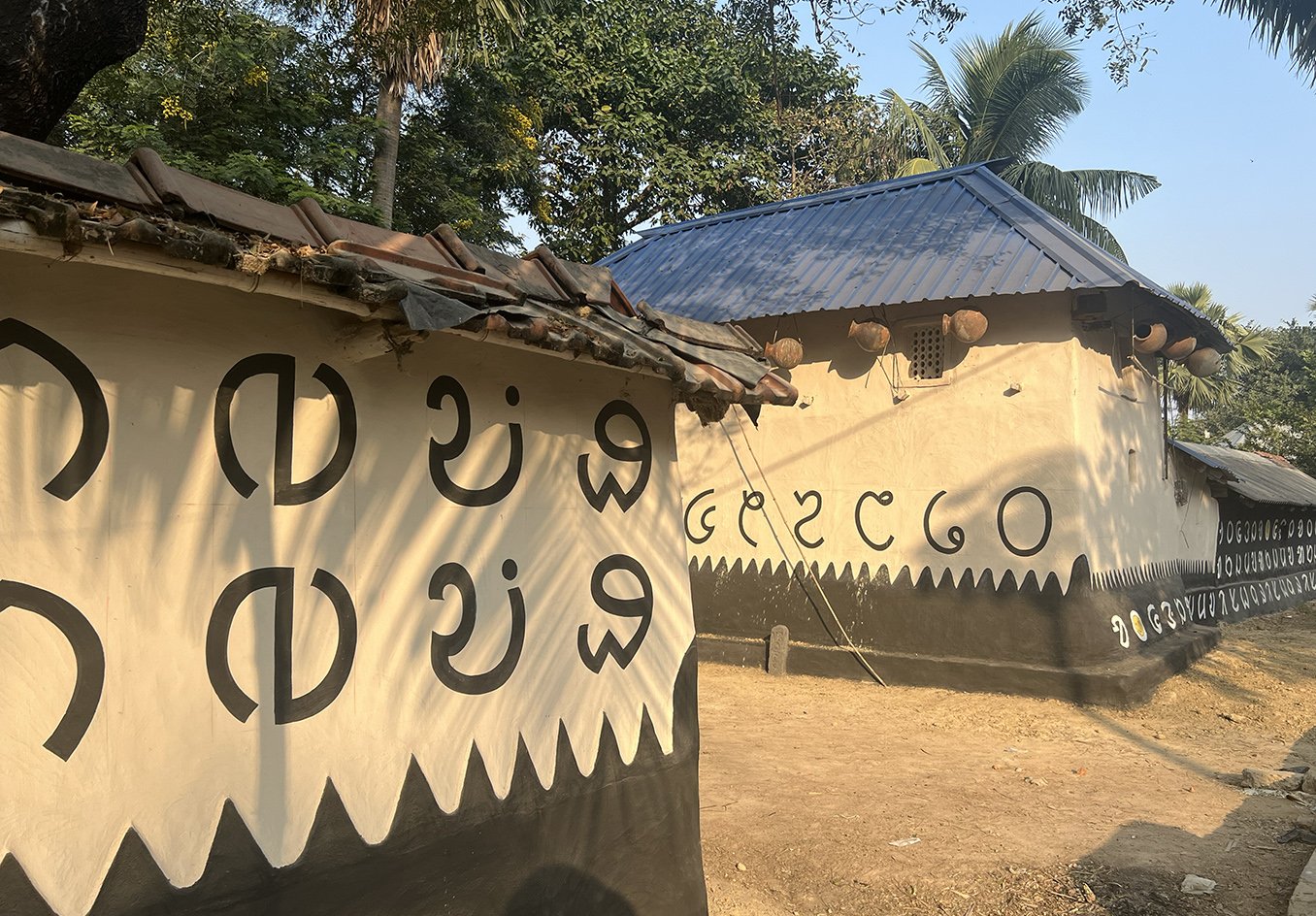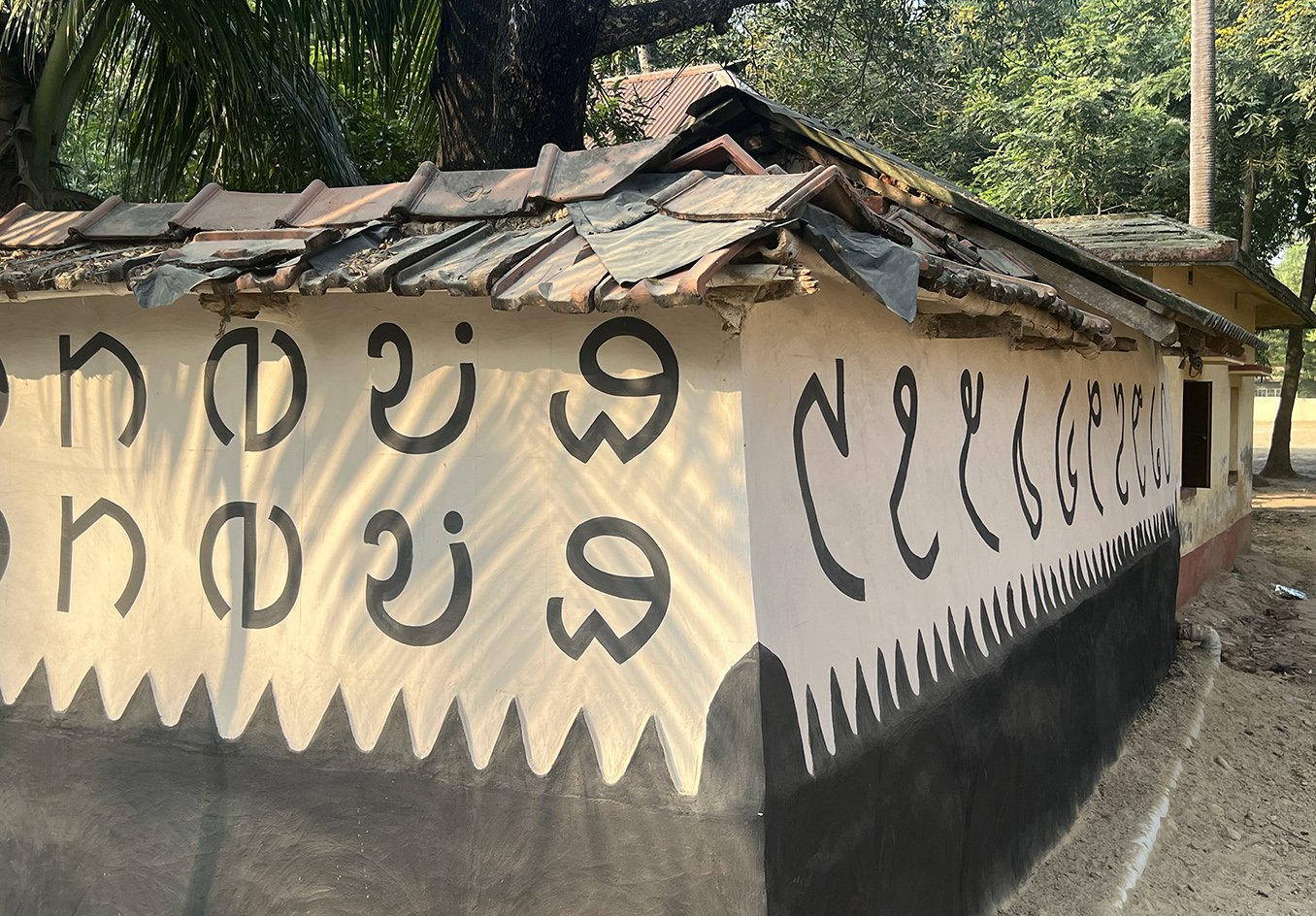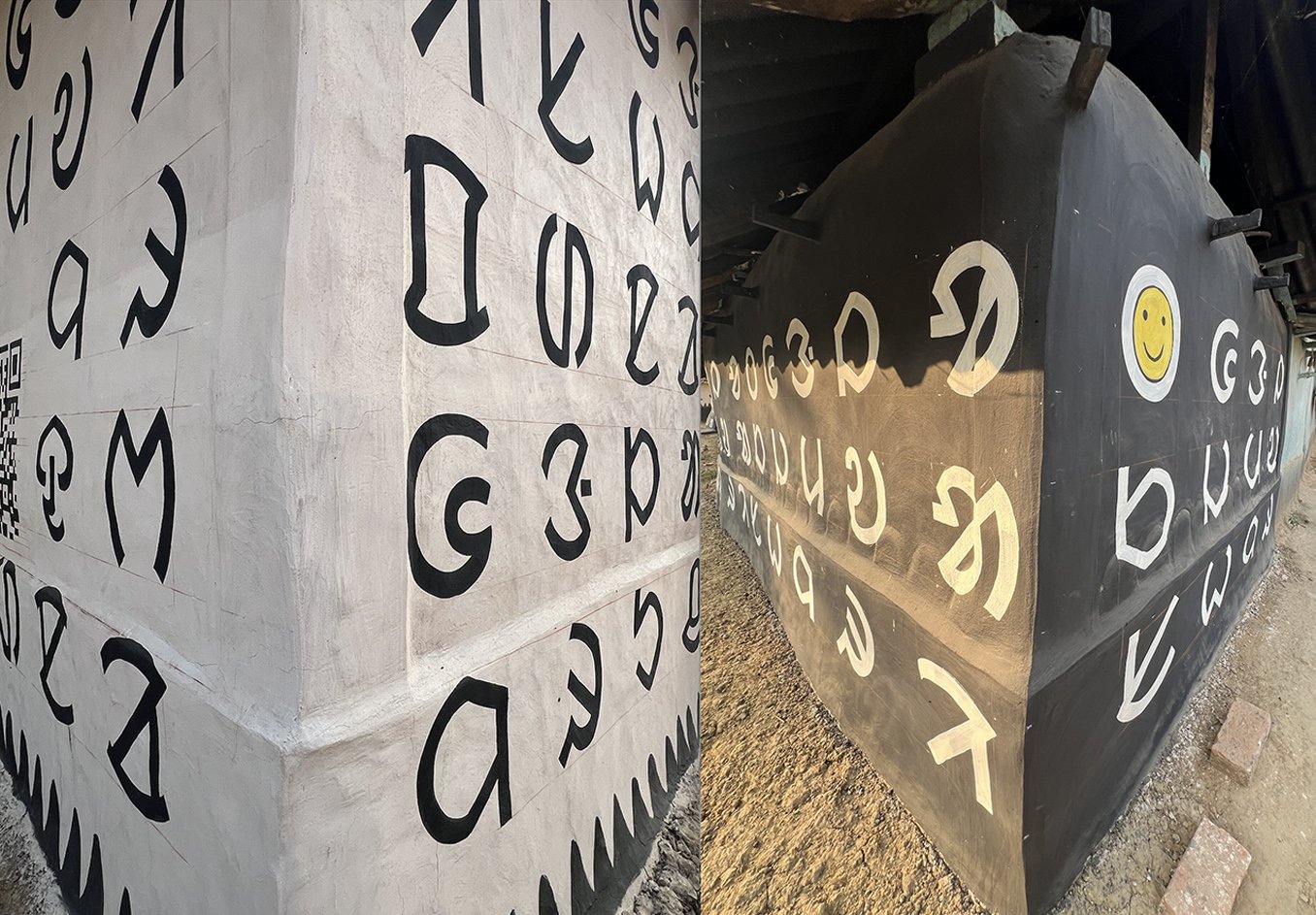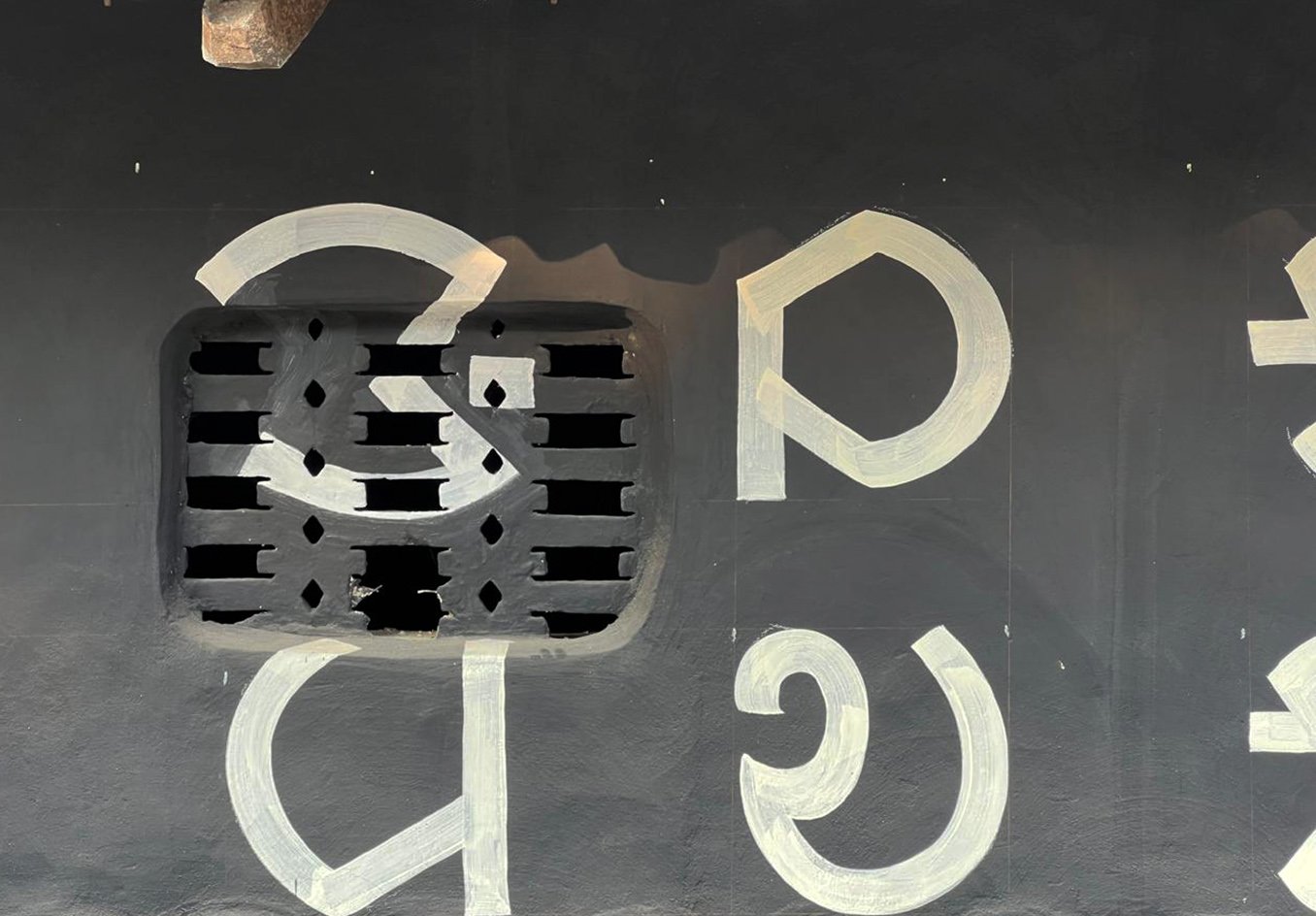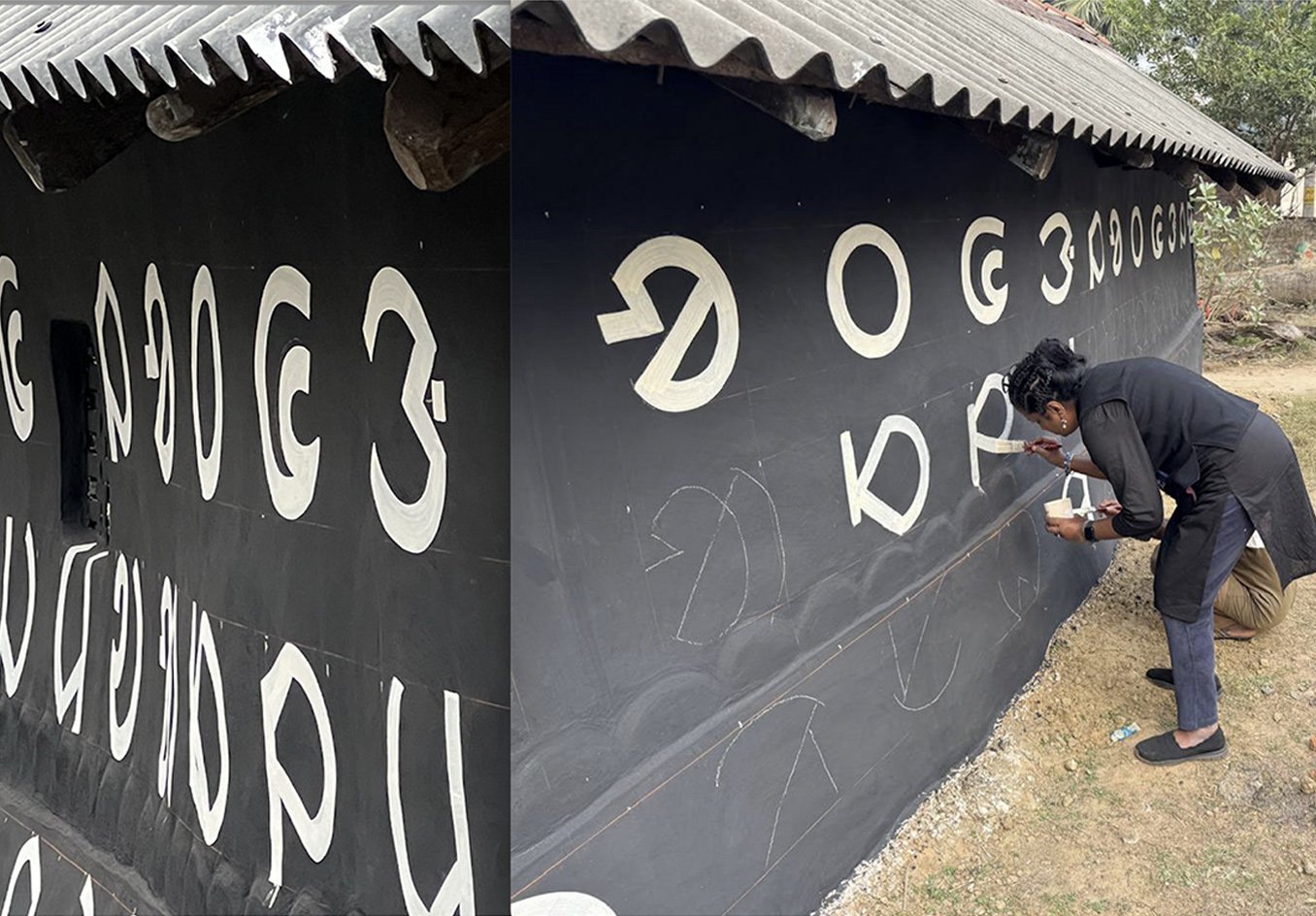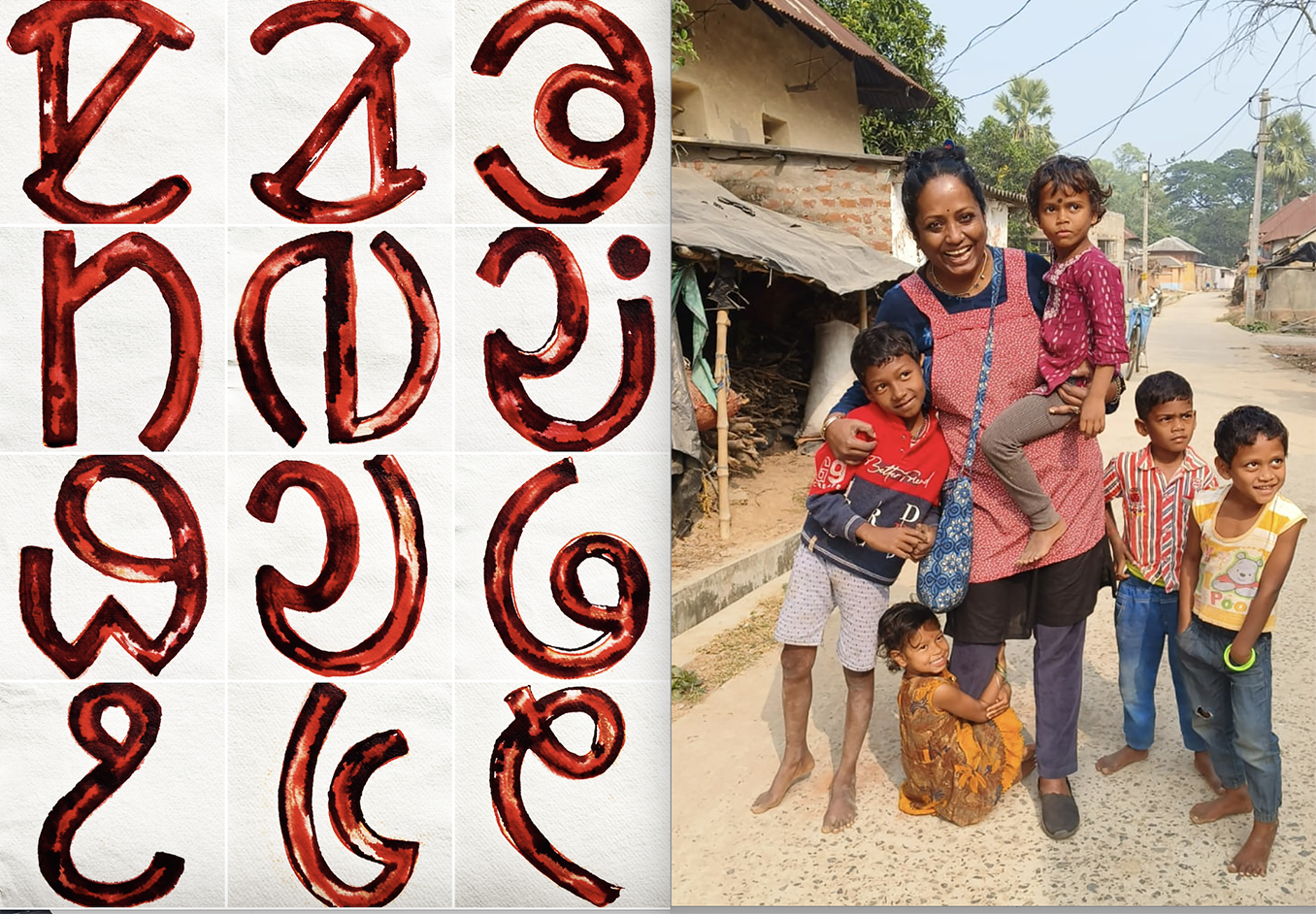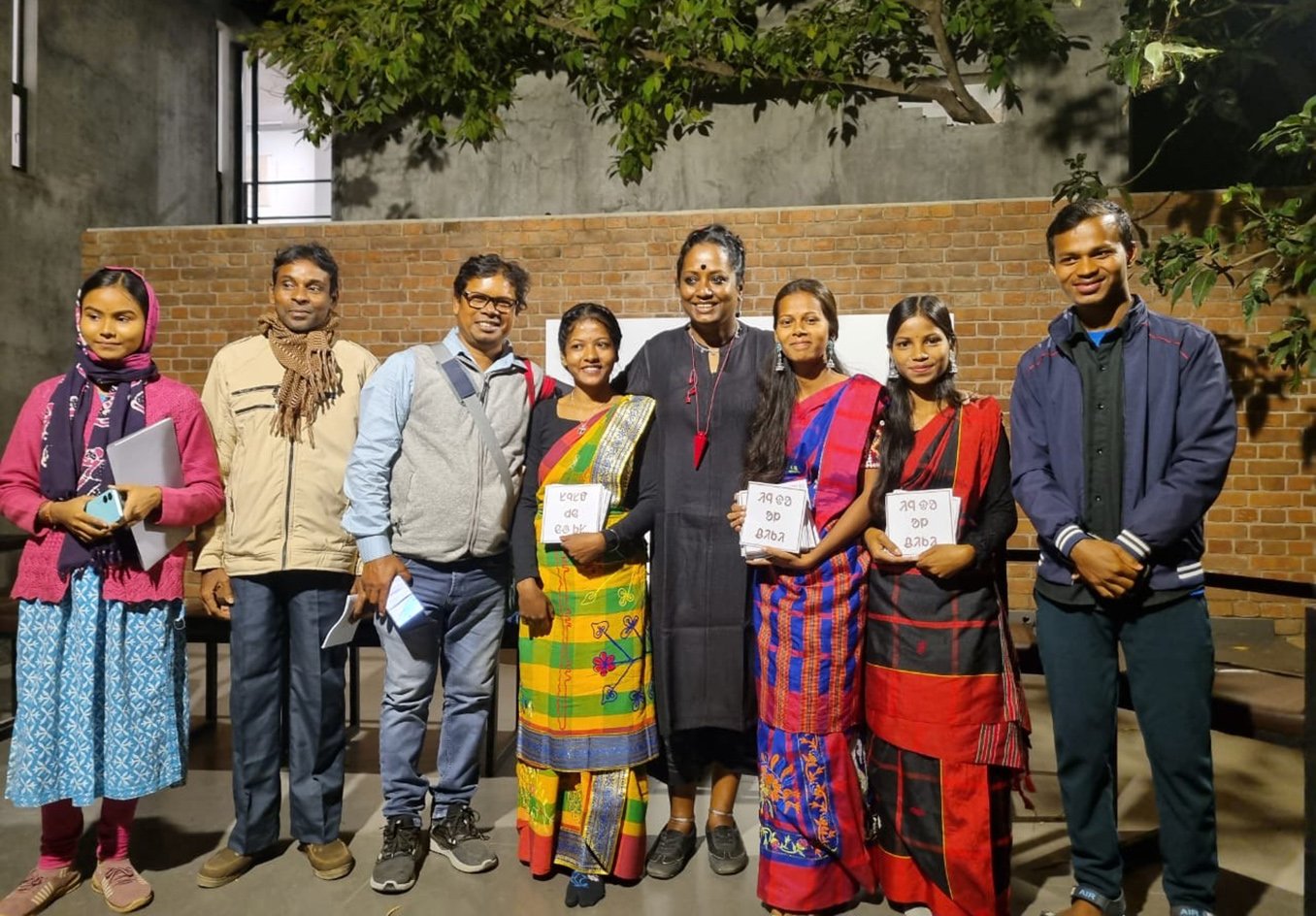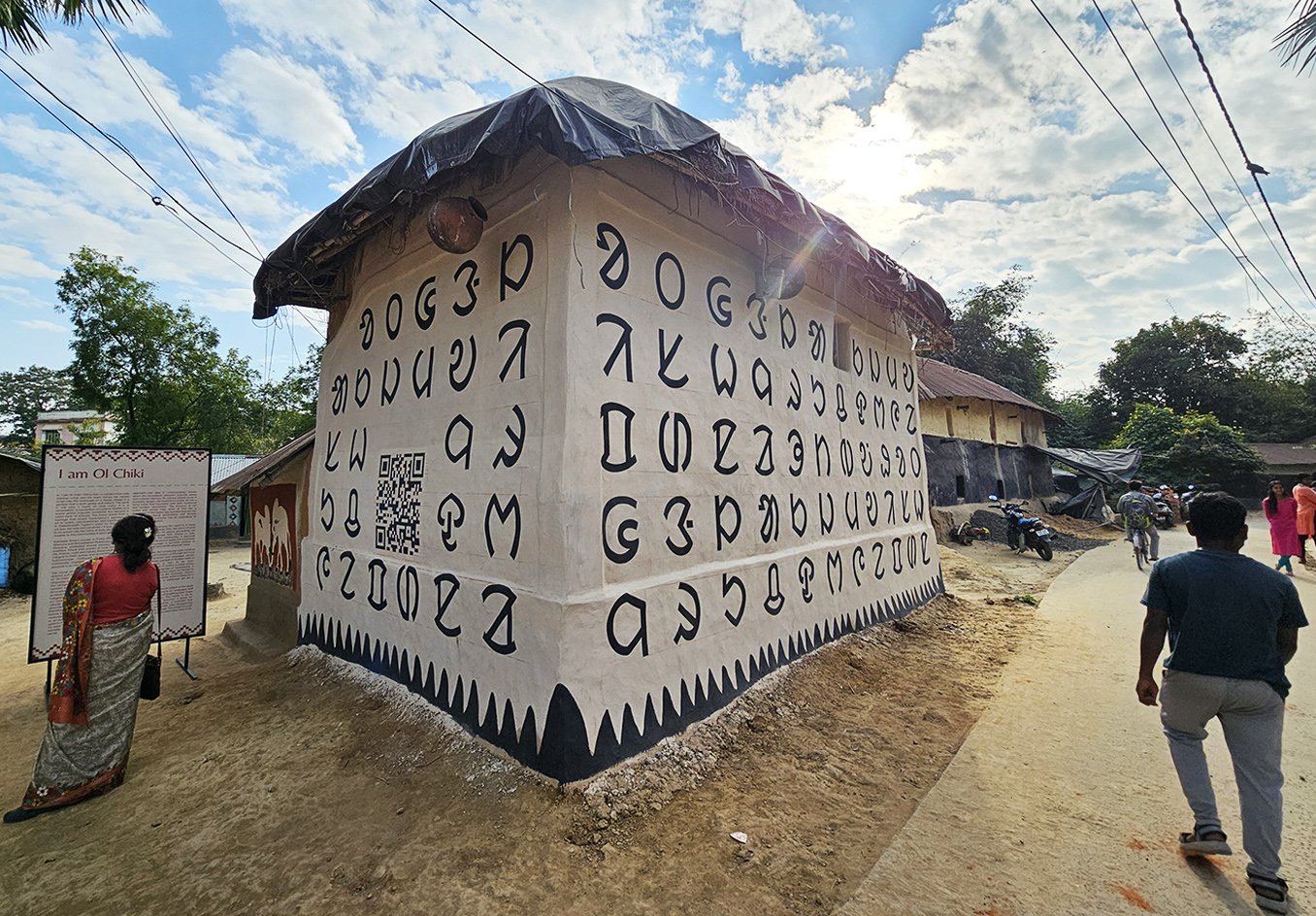I Am Ol Chiki / ᱤᱧ ᱫᱚ ᱚᱞ ᱪᱤᱠᱤ
In ‘I am Ol Chiki’, Mithu Sen, in collaboration with Bodi Baski, Sanyasi Lohar and team, brings the Santali script into the landscape of a Santal village in a reclamation, a reassertion of cultural identity in a world where linguistic invisibility has become a silent form of erasure.
The Ol Chiki script, developed by pandit Raghunath Murmu in 1925, here filling the village walls that are at once familiar and subversive. They are not decorative but declarative. In a society where dominant languages and scripts overshadow indigenous tongues, it is a manifesto of survival.
Sen’s approach—her idea of “unlanguaging”—breaks down the boundaries between linguistic power and cultural memory. Sen’s inclusion of QR codes and emojis bridging generations and literacy levels, drawing everyone into an experience of recognition and respect .The booklet accompanying the mural is distributed within the community, not only a reference or guide; it is a symbolic reclaiming of language—an artefact of identity .
The project echoes the community spirit through the voice of those whose histories and languages remain threatened.
It evokes a world where Bengali, the cultural language of Santiniketan, is silent momentarily, allowing space for Santali to speak. It is an unsettling yet necessary silence, one that invites us to consider what it means for a language to belong to a landscape yet be a stranger in its own land.
‘It reflects on the quiet violences that erasure enacts on languages and cultures, the generations of forgetting that shape identities in the shadows. The mural, becomes a place for remembrance and resistance—a reminder that identity, when left unclaimed, risks disappearing into the unspoken, the unread.
'I am Ol Chiki' speaks to the survival of identity in the face of forgetting. It offers a recognition and an encounter – a lasting immersion in language, history, and an ever-renewing sense of self.
• Excerpts from the curator’s Siddharth Sivkumar’s note @bengal_biennale #unworld






